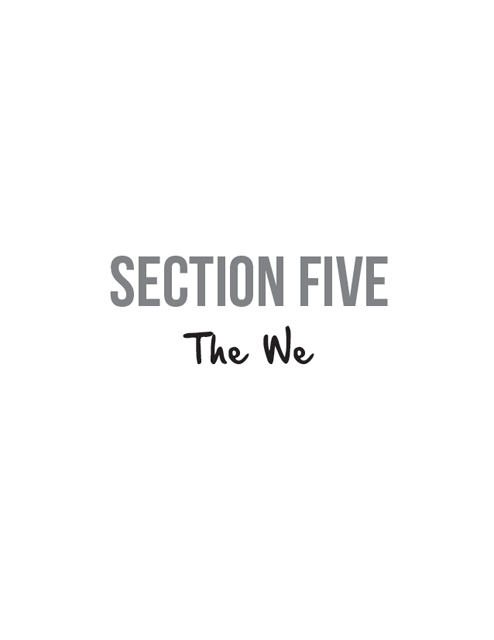The WE includes the ME and the other person, meaning relationships. We believe relationships matter as much as results and are in fact key to your results.
To engage the WE requires you develop the motivation, courage, and skills to engage with someone whose opinion is different from yours. This isn’t always easy.
As a leader, it means creating a space or container within the team for the good, bad, ugly, and beautiful. Within this container, you can build and engage with the energy of conflict. This portion of the book gives you the frame of reference, tools, and tips for hanging in through difficult conversations so you can get to clarity and collective creativity on the other side.
WE focus develops your team’s relational health and the ability to engage with each other directly, honestly, and in real-time. As a result, the trust, energy, inspiration, and engagement on the team skyrockets. The team better understands differences and clears up breakdowns that slow everyone down and stop forward momentum. When you focus on the WE, gossip, politics, and factions disappear. Your team is more connected, fulfilled, and engaged as trust and curiosity expand across relationships. Performance velocity accelerates.
Remember, creativity comes from the gaps between us, which are our differences. These gaps can lead to clashing, but that clash is where a leader must choose to opt in. Innovation results when these differences are explored, bent, twisted, and combined. Something new emerges that no one saw in the beginning. This is where the source of the team’s competitive advantage emerges. This is the power of opting in.
The team’s willingness to cycle through multiple oh, sh*t! moments expands as each person learns from every experience. Your team is better able to tolerate the tension and ambiguity of conflict. Together you produce innovative solutions to tough problems—not just once, but repeatedly.
As teams become more tolerant of tension and ambiguity, the differences on a team become valuable assets. Instead of avoiding the conflict and discomfort, team members dare to take more risk, and that generates collective genius. A team that just gets along or stays in a comfort zone may stay together, but it will miss the collective brilliance and competitive advantage that comes when differences are acknowledged, shared, twisted, tested, and used to reach new frontiers. Let’s dive in and learn how.

